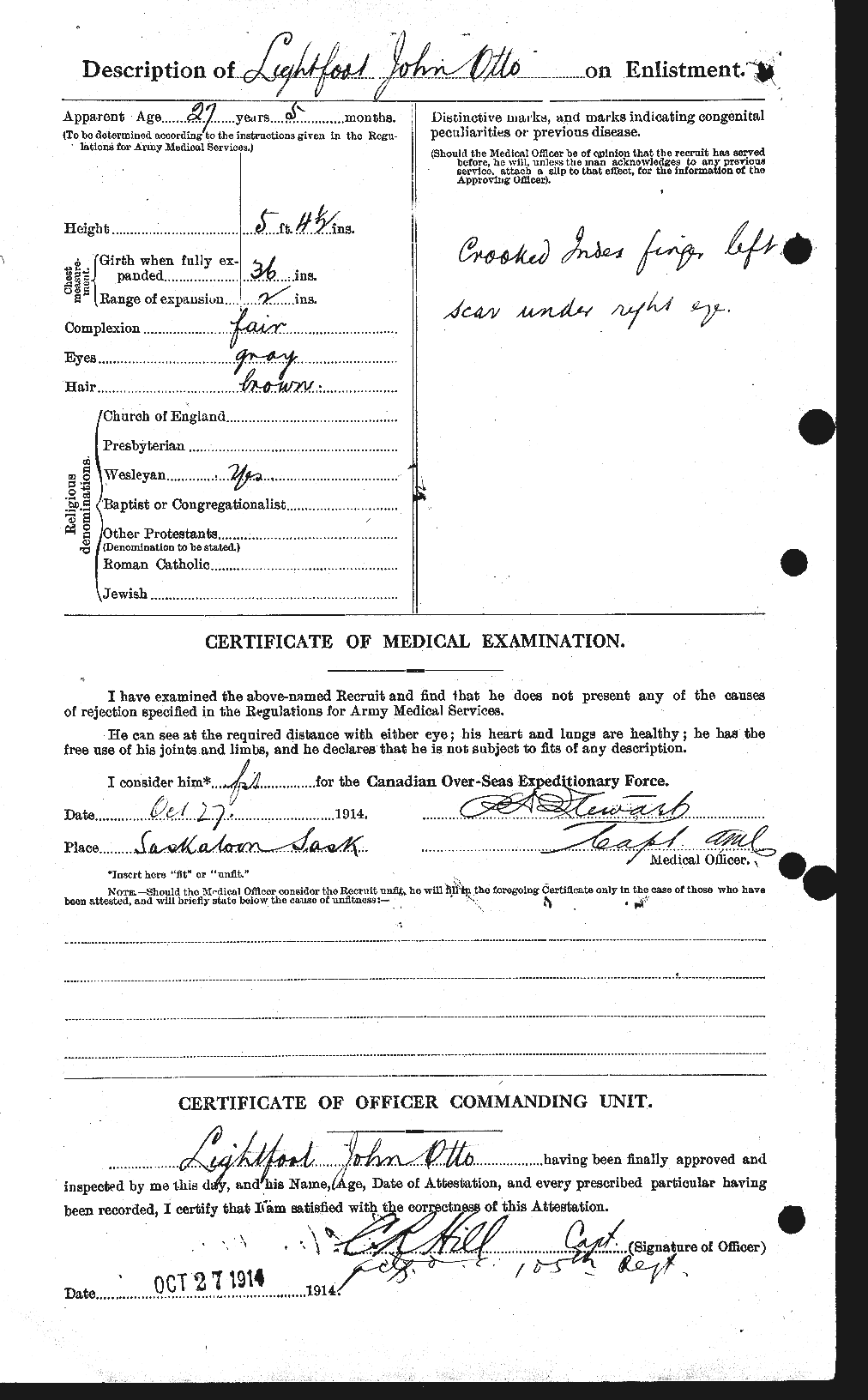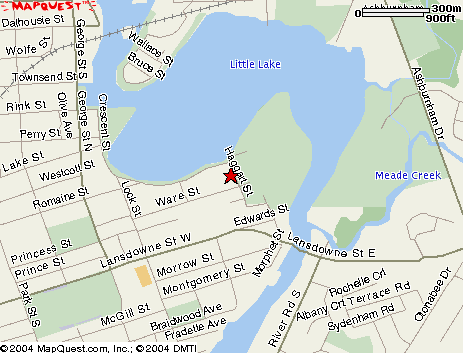

John Otto Lightfoot

John Otto Lightfoot was born 5/31/1887. His father was John Lightfoot and his mother was Katherine Lightfoot. John also had a brother named Charles Lightfoot. John’s mother lived at 505 Walton Street, Peterborough, Ontario. After John left to train for the war she had further moved to Edmonton. Meanwhile his brother lived in Saginaw, U.S.A. John had experience in the militia for four years before enlisting for the war. John was a salesman at trade. At the age of 27 he was single and never married. His religion was Wesleyan. He was five feet, four and a half inches. John had a fair complexion. He had grey eyes and brown hair. Also, two distinct features; there was a scar under his right eye and he had a left crooked index finger. John had enlisted in Saskatoon, Saskatchewan with the twenty eighth battalion. John had only the rank of private and earned no medals as he did not have the opportunity to make it into combat. His regimental number was 73566 and recorded in the Canadian Expeditionary Force. As he shortly arrived to Europe John became ill and got pneumonia. He was discharged January 6, 1915 and sent to Winnipeg hospital for treatment. Sadly January 15, 1915 John had past passed away from pneumonia at the age of twenty seven. John was brought back and buried in Little Lake Cemetery, in Peterborough, Ontario. Also, he is recorded in the book of remembrance which can be viewed June 17 in the Peace Tower, Ottawa.
1887-1915

Book of Remembrance Page,
http://www.peterboroughmuseumandarchives.ca/Exhibitions/On_the_Web/The_Book_of_Remembrance___City___County_of_Peterborough/Book_of_Remembrance_-_Illustrated_View.htm
Attestation Papers




John's Future With The 28 Battalion
The 28th Battalion (Northwest), CEF was an infantry battalion of the Canadian Expeditionary Force during the Great War. The Battalion was authorized on 7 November 1914 and embarked for Britain on 29 May 1915. It disembarked in France on 18 September 1915, where it fought as part of the 6th Infantry Brigade, 2nd Canadian Division in France and Flanders until the end of the war. The battalion was disbanded on 30 August 1920.
28th Battalion marching past Sir Robert Borden. July, 1918
28th Battalion establishing a signal station at the Battle of Vimy Ridge. The 28th Battalion originally recruited in Saskatoon, Regina, Moose Jaw and Prince Albert, Saskatchewan and Fort William and Port Arthur (now Thunder Bay), Ontario and was mobilized at Winnipeg, Manitoba.


Letters
Resting Place


Sadly after John had past away his family brought him back to Peterborough to be buried in the Little Lake Cemetery. Located at Peterborough, ON
Little Lake Cemetery,
Sickness was big factor on the men during the war. There were many illnesses such as trench foot, trench fever, and gas. Some soldiers suffered from a condition called trench foot. This was caused by standing in water and mud for a long time and losing blood circulation. In some cases, soldiers' socks started to grow on to their feet. In severe cases, soldiers had to have their feet or legs amputated (cut off). Trench fever was an unpleasant disease caused by body lice during World War One. The fever was easily passed between soldiers, causing them to suffer from high fever, headaches, aching muscles and sores on the skin. It was painful and took around twelve weeks to get better from. For many soldiers, it was an illness that struck them more than once. Poisonous gas was used as a weapon for the first time in World War One. Some gas was intended to only cause noses to run and eyes to water. Others were far more dangerous. When gas was first used, doctors and nurses did not know how to treat even simple symptoms. Gas could affect someone seeing and breathing in just a few minutes so protective masks were given to all soldiers. Some fumes stayed on clothes causing blisters and sores. Bathing and washing would have solved the problem but this was not possible in the trenches. Many soldiers suffered from the effects of gas attacks for the rest of their lives.
Shell shock was another new illness during World War One. It was not a physical illness, but a mental one. The constant noise of explosions and guns, along with the smell and danger of the trenches made many soldiers very scared and uncomfortable. Shell shock caused soldiers to act strangely. They found life on the front line very hard to deal with and would stop being able to follow commands and do their duties properly. To begin with, officers and doctors did not understand the illness and thought the soldiers were weak. Some were sent to special hospitals to recover. Others had to carry on fighting.
Sickness In The War



